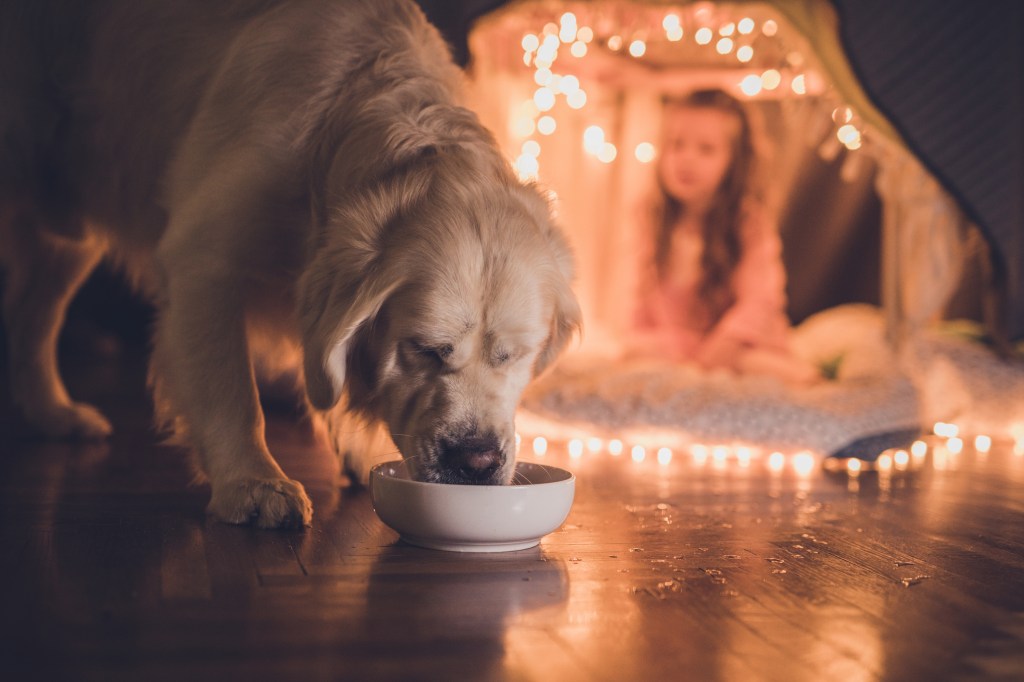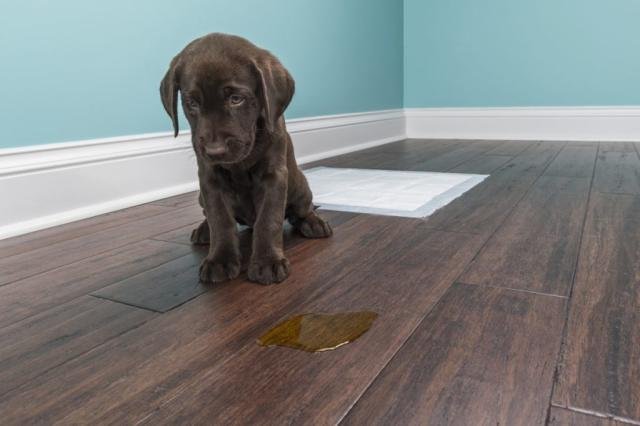When it comes to potty training your dog, it’s important to remember not to punish them for accidents inside the house. Instead, simply clean up the mess and avoid any forms of punishment that may make them afraid or fearful.
Proper potty training requires consistency and positive reinforcement, ensuring that your dog knows when and where to go. Pay attention to your dog’s body language and recognize the signs that they need to go potty. By establishing a routine, using designated potty areas, actively supervising, and providing positive reinforcement, you can effectively potty train your dog without resorting to punishment.
Understanding The Importance Of Potty Training
Understanding the importance of potty training is crucial for dog parents. Here are 10 things you should know about potty training your dog, from avoiding punishment to establishing a routine and using positive reinforcement.
Benefits Of Potty Training For Dogs
Potty training is an essential aspect of raising a dog and comes with numerous benefits for both the pet and the owner. By understanding the importance of potty training, dog parents can create a harmonious living environment and strengthen their bond with their furry friends.The Impact Of Potty Training On The Owner-pet Relationship
One of the primary benefits of potty training for dogs is its positive impact on the owner-pet relationship. When a dog is properly potty trained, it reduces the stress and frustration for both the owner and the pet. By establishing a routine, the dog parent can predict when their dog needs to eliminate, resulting in fewer accidents inside the house. Potty training also helps in building trust and mutual understanding between the owner and the pet. When a dog parent takes the time to patiently train their furry friend, it demonstrates love, care, and commitment. This process creates a bond of trust and increases the dog’s overall obedience and responsiveness to commands. Additionally, potty training promotes a cleaner and healthier living environment for both the dog and the owner. Accidents can leave unpleasant odors and unsightly stains, which can be detrimental to the atmosphere of the home. By diligently potty training their dog, owners can maintain cleanliness and prevent the spread of harmful bacteria. Potty training also instills discipline in dogs. By teaching them where and when to eliminate, they learn to control their bodily functions, leading to better behavior overall. This discipline extends to other areas of training, making it easier for the owner to teach their dog commands and manners. In summary, potty training is a crucial aspect of responsible dog ownership. It not only prevents accidents and promotes cleanliness but strengthens the bond between the owner and the pet. By investing time and effort into potty training, dog parents can create a harmonious and fulfilling relationship with their furry companions.
Credit: www.pinterest.com
Starting Potty Training Early
Discover 10 essential tips for dog parents to successfully potty train their furry friends. Learn about the importance of positive reinforcement, establishing a routine, and being patient throughout the training process. Find out why punishing your puppy for accidents can be counterproductive.
Starting Potty Training Early: The Ideal Age to Start Potty Training When it comes to potty training your furry friend, starting early is key. The ideal age to begin potty training your dog is when they are around 12 to 16 weeks old. At this stage, their bladder and bowel control starts to improve, making it easier for them to learn and adapt to the potty training routine. Setting Up a Designated Potty Area To ensure successful potty training, it is important to set up a designated potty area for your dog. This area should be easily accessible and away from high-traffic areas of your home. Whether you have a backyard or an apartment balcony, make sure to choose a specific spot where your dog can relieve themselves. HTML Syntax:The Ideal Age To Start Potty Training
When it comes to potty training your furry friend, starting early is key. The ideal age to begin potty training your dog is when they are around 12 to 16 weeks old. At this stage, their bladder and bowel control starts to improve, making it easier for them to learn and adapt to the potty training routine.Setting Up A Designated Potty Area
To ensure successful potty training, it is important to set up a designated potty area for your dog. This area should be easily accessible and away from high-traffic areas of your home. Whether you have a backyard or an apartment balcony, make sure to choose a specific spot where your dog can relieve themselves. In this potty area, use a combination of positive reinforcement, consistency, and rewards to encourage your dog to use the designated spot. Be patient and provide ample praise and treats whenever your dog successfully eliminates in the designated area. This will help reinforce the positive behavior and make them more likely to repeat it in the future. Remember, accidents are bound to happen during the potty training process. If you catch your dog in the act of eliminating in an undesirable area, gently redirect them to the designated potty area without scolding or punishing them. Consistency and positive reinforcement are key to successful potty training, so be sure to establish a routine and stick to it. With early and consistent potty training, your dog will learn to understand where and when they should eliminate. This will not only prevent accidents in your home but also strengthen the bond between you and your furry companion. So, start potty training early and set up a designated potty area to pave the way for a clean and happy home for both you and your dog. Sources: – https://www.humanesociety.org/resources/how-potty-train-your-dog-or-puppy – https://www.webmd.com/house-training-your-puppyPositive Reinforcement Techniques
When potty training your dog, it’s important to use positive reinforcement techniques. Avoid punishment and instead reward your dog for going outside. Establish a routine, be patient, and stay consistent to ensure successful potty training.
Potty training is a crucial step in the journey of becoming a responsible dog parent. While it can be challenging at times, using positive reinforcement techniques can make the process smoother and more enjoyable for both you and your furry friend. Positive reinforcement involves rewarding your dog for exhibiting desired behaviors, such as eliminating in the designated potty area. Here are two effective positive reinforcement techniques that can help you successfully potty train your dog:Using Treats And Praise As Rewards
One of the most effective ways to reinforce positive behavior during potty training is by using treats and praise as rewards. Whenever your dog successfully eliminates in the designated potty area, immediately reward them with a small treat and offer enthusiastic praise. This encourages your dog to associate going potty in the right place with a positive experience. Treats can be small, bite-sized pieces of their favorite snack or specially designed training treats. Remember to use a high-pitched, enthusiastic tone when praising your dog, as they respond well to positive vocal cues.Establishing A Consistent Routine
Consistency is key when potty training your dog. Establishing a consistent routine helps your dog understand when and where they should eliminate. Create a schedule for feeding times and bathroom breaks, and stick to it as closely as possible. Take your dog to the designated potty area at regular intervals throughout the day, especially after meals, playtime, and naps. Using consistent verbal cues, such as “go potty” or “do your business,” can also help your dog understand what is expected of them. By following a consistent routine, you’re setting your dog up for success and making the potty training process much smoother. Remember, every dog is unique, and the time it takes to fully potty train can vary. Be patient, stay consistent with positive reinforcement techniques, and celebrate even the smallest victories along the way. With time and dedication, your furry friend will become a potty training pro!
Credit: dogtime.com
Common Mistakes To Avoid
One common mistake that many dog parents make during potty training is punishing their dogs for accidents. It’s important to remember that accidents are a natural part of the learning process, and punishing your dog will only create fear and confusion.
Instead of punishing your dog, focus on cleaning up any accidents and preventing future ones. Dogs do not associate punishment with past actions, so rubbing their nose in the mess or scolding them will only make them afraid of you or reluctant to eliminate in your presence. Punishment can have long-lasting negative effects on your dog’s potty training progress.
Another common mistake to avoid during potty training is skipping praise and rewards. It’s important to reinforce positive behavior and let your dog know when they’ve done something right.
When your dog eliminates in the correct spot, make sure to provide immediate praise and rewards. This positive reinforcement helps your dog understand that they’re doing the right thing and encourages them to repeat the behavior. Whether it’s verbal praise, a small treat, or a pat on the back, find what motivates your dog and use it to reinforce their good behavior.
To summarize, when potty training your dog, avoid punishing them for accidents and instead focus on positive reinforcement. Punishment can create fear and confusion, hindering their progress. Remember to provide immediate praise and rewards when your dog eliminates in the correct spot to reinforce their good behavior. By avoiding these common mistakes, you’ll set your dog up for success during the potty training process.
Troubleshooting Potty Training Challenges
While potty training your furry friend can be a rewarding experience, it is not without its challenges. Accidents and setbacks are inevitable, but with the right approach, you can address them effectively. Here are some tips for troubleshooting potty training challenges:
Recognizing Signs That Your Dog Needs To Go
The key to successful potty training is being able to recognize when your dog needs to go. Keep an eye out for these common signs:
- Sniffing the ground or circling around
- Restlessness or pacing
- Whining or scratching at the door
- Squatting or crouching
When you notice any of these signs, take your dog outside to their designated potty area immediately.
Addressing Accidents And Setbacks
Accidents are bound to happen during the potty training process. It’s important not to punish your dog for these accidents as it will only create fear and confusion. Instead, follow these steps when accidents occur:
- Clean up the mess promptly using an enzymatic cleaner to eliminate any lingering odor.
- Do not scold or punish your dog; they won’t understand what they did wrong.
- Revisit the basic principles of potty training and ensure you are being consistent with your training methods.
- Consider reevaluating your dog’s feeding and watering schedule to prevent accidents.
- Stick to a routine and take your dog out regularly, especially after meals, naps, and playtime.
Remember that setbacks are normal and part of the learning process. Stay patient and positive, and your dog will eventually become fully potty trained.

Credit: fuel.york.ie
Frequently Asked Questions For 10 Things Dog Parents Should Know About Potty Training
What Not To Do When Potty Training A Dog?
To successfully potty train a dog, avoid punishment when they have accidents. Instead, clean up the mess and refrain from scolding or rubbing their nose in it. Punishment will only make them afraid and hinder their progress. Focus on positive reinforcement and take them to the designated spot when needed.
What Is The Hardest Dog To Potty Train?
The Dachshund, Bichon Frise, Dalmatian, Jack Russell Terrier, and Afghan Hound are the hardest dogs to potty train. They tend to be smart but stubborn, making training more challenging.
How Do You Discipline A Dog For Potty Training?
To discipline a dog for potty training, avoid punishment like rubbing their nose or scolding them. Instead, make a loud noise to distract them and quickly take them to the designated spot. Praise and treat them immediately after they eliminate in the right spot.
Consistency is key in potty training.
At What Age Are Dogs Fully Potty Trained?
Dogs are typically fully potty trained by the age of 6 months.
Conclusion
Potty training is an essential process for dog parents to establish routines and communicate expectations with their furry friends. By using positive reinforcement, establishing a designated potty area, and being consistent and patient, dog parents can successfully potty train their dogs.
It’s important to avoid punishment and instead focus on praise and rewards for desired behavior. By paying attention to their body language and recognizing the signs, dog parents can effectively meet their dog’s potty training needs. So, stay consistent, be patient, and your dog will soon master the art of potty training.








